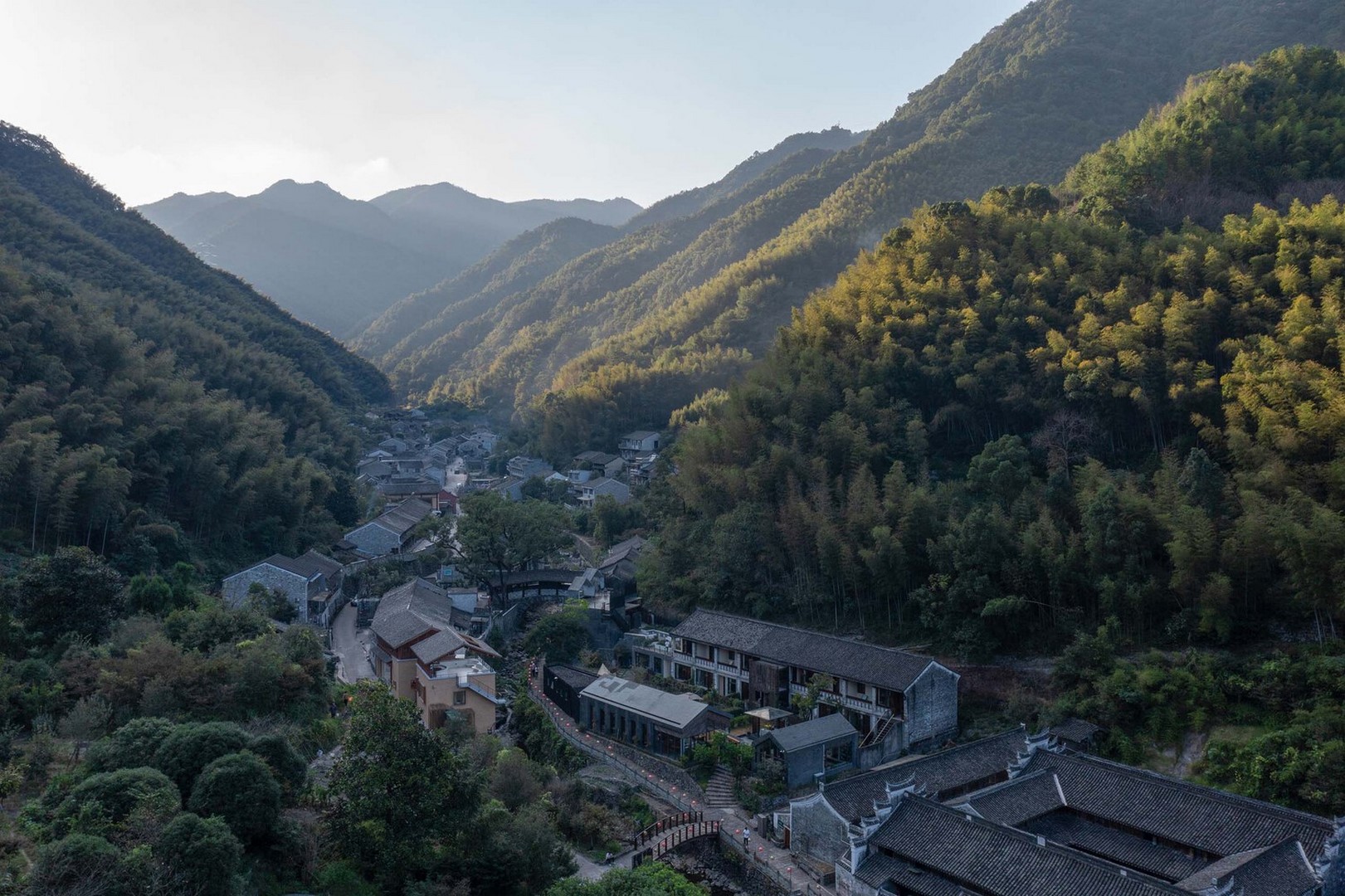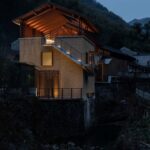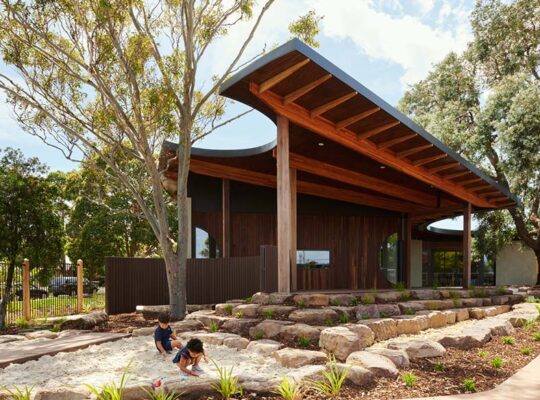Introduction to Qixiakeng Village
Qixiakeng Village, situated in Xikou Town, Fenghua, serves as the gateway to the ancient Qixiakeng Road. Initially known as Peach Blossom Pit, the village later earned its name due to the stunning autumn scenery, reminiscent of glowing clouds. Nestled in a valley, the village boasts residential buildings lining both sides of a tranquil stream, surrounded by lush forests, towering mountains, and meandering canyons.

Location and Transformation of the Riverside Restaurant
The Riverside Restaurant, an integral part of the hotel complex, occupies a picturesque spot by the stream at the village entrance. It underwent a remarkable transformation, being rebuilt and repurposed from a former power station. Situated on a narrow road with a rocky ridge on one side, the restaurant’s design aimed to maintain harmony with the surrounding architecture while enhancing its connection to the street.
Embracing Vividness in Design
Built on a trapezoidal plot adjacent to the stream, the restaurant maximized its space utilization, resulting in an irregular trapezoidal structure. The roof design, featuring crooked eaves reminiscent of traditional village architecture, established a vibrant relationship with the surroundings. By integrating open spaces on the roof and large skylights, the design embraced nature while ensuring structural coherence.
Conversion and Memory Preservation
The transformation of the abandoned power station into a small bar symbolizes the village’s evolving identity. Retaining elements of the past, such as the generator, serves as a reminder of the village’s heritage. This preservation of memory underscores the importance of cultural continuity amidst modernization.

Structural Changes and Material Selection
Incorporating elements of traditional wooden architecture, the restaurant’s facade and interiors exude warmth and authenticity. Structural modifications, from concrete to steel and wood, reflect a transition towards lighter, more versatile construction methods. The careful selection of materials and meticulous craftsmanship ensured both aesthetic appeal and structural integrity.
Enhancing Experience and Interaction
The design prioritized seamless connectivity between different areas of the restaurant while offering flexibility in space utilization. By integrating outdoor terraces and internal spaces, the restaurant fosters a dynamic dining experience. The interaction between the building and its surroundings creates a sense of belonging and enriches the overall ambiance.

Engaging with the Surroundings
Acknowledging the importance of contextual integration, the restaurant’s design encourages interaction with its natural surroundings. Whether viewed from afar or experienced up close, the restaurant harmonizes with the landscape, enhancing its visual appeal and cultural significance.
Conclusion: A Culinary Haven Amidst Nature
The Riverside Restaurant at Qixiakeng Village stands as a testament to thoughtful design and cultural preservation. By reimagining a former power station into a vibrant dining destination, the project celebrates the village’s heritage while embracing modernity. With its seamless blend of tradition and innovation, the restaurant offers patrons a unique culinary experience amidst the beauty of nature.
























